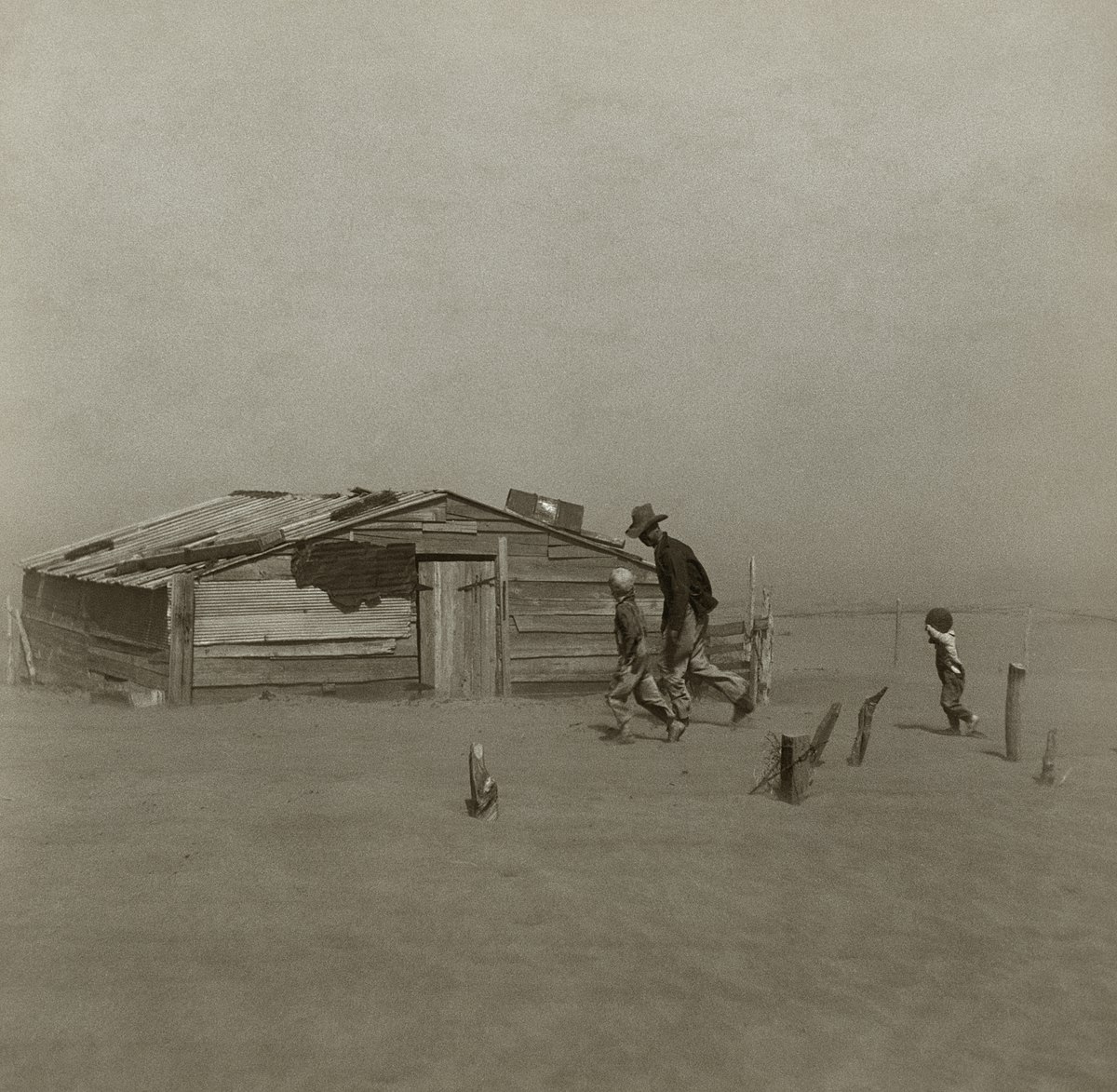With insufficient understanding of the ecology of the plains, farmers had conducted extensive
deep plowing of the virgin
topsoil of the
Great Plains during the previous decade; this had displaced the native, deep-rooted
grasses that normally trapped soil and moisture even during periods of
drought and high winds. The rapid mechanization of farm equipment, especially small gasoline tractors, and widespread use of the
combine harvester contributed to farmers' decisions to convert arid grassland (much of which received no more than 10 inches (250 mm) of precipitation per year) to cultivated cropland.
[4] During the drought of the 1930s, the unanchored soil turned to
dust, which the prevailing winds blew away in huge clouds that sometimes blackened the sky. These choking billows of dust – named "black blizzards" or "black rollers" – traveled cross country, reaching as far as the
East Coast and striking such cities as
New York City and
Washington, D.C. On the plains, they often reduced visibility to three feet (1 m) or less.
Associated Press reporter Robert E. Geiger happened to be in
Boise City, Oklahoma, to witness the "
Black Sunday" black blizzards of April 14, 1935; Edward Stanley, the Kansas City news editor of the Associated Press, coined the term "Dust Bowl" while rewriting Geiger's news story.
[5][6]


 There really are mercury thermometers and they do NOT respond to humidity.
There really are mercury thermometers and they do NOT respond to humidity.